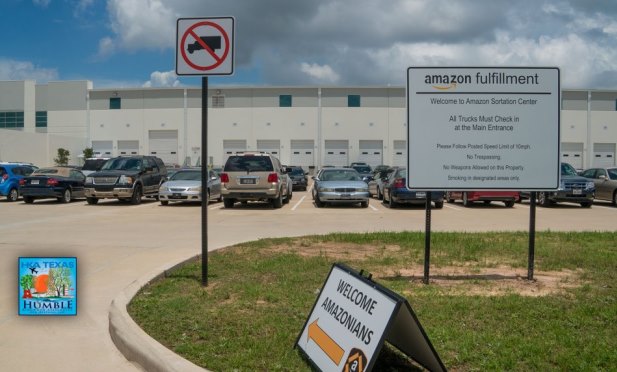 Packages are moving at Amazon’s fulfillment center, one mile west of Humble city limits.
Packages are moving at Amazon’s fulfillment center, one mile west of Humble city limits.
HOUSTON—As consumer needs and business demands evolve, so must commercial real estate. In the ever-evolving world of technology, specialization is driving value for tenants, investors and end users across the retail and industrial sectors, according to Transwestern’s latest edition of Insights.
Retailers have long tracked traffic counts, i.e. how many consumers enter and exit stores, and at what hours. However, sophisticated retailers are now monitoring how customers move and interact with merchandise within stores, influencing real estate decisions, says Transwestern.
Mobile data helps retailers improve the customer’s shopping experience, playing a role in store and product configuration as well as staffing decisions. Using a mobile app, retailers can personalize the experience, engaging directly with customers by suggesting new or similar items or sending the customer coupons or deal codes.
Specialized data vendors such as UberMedia and Streetlight Data provide data that shows consumer activity patterns and how customers interact with physical space. A more exact trade area can be established by plotting out all mobile interactions, which is highly beneficial for site selection, the Transwestern report highlights.
Online sales have challenged industrial site selection teams by making new and sometimes contrary demands on real estate. The report points out that most merchants enjoyed lower operating costs in the early days of e-commerce by utilizing fulfillment centers outside of costly populated areas, but that model is quickly losing its luster.
Many industrial suppliers are adapting to e-commerce changes and driving down costs by consolidating widely dispersed warehouses into hub-and-spoke networks, characterized by highly efficient facilities at the center that receive, store and ship commodities to customers.
“In Houston, Amazon actually built two of the ‘spokes’ first, one near 249 and the Beltway, and one on the north side of the Bush airport,” Ben Newell, senior vice president at Ridge, tells GlobeSt.com. “The ‘hub’ is under construction now, at I-45 and the Beltway.”
Large fulfillment centers are more likely to be drawn to intermodal hubs offering multiple modes of freight access including trucks, rail, air freight or a seaport, and industrial users are showing a willingness to pay for premium locations. Site selection for these fulfillment centers should focus on functional optimization, identifying real estate strategies that improve operational efficiencies, output, productivity, employee amenities and ultimately, net operating income, says Transwestern.
Companies pursuing functional optimization in space planning have significantly increased the quantities, densities and classifications of commodities stored, exponentially increasing the building’s utility.
As previously reported, Gateway Southwest Industrial Park provides a central location for business expansion.

















 Copyright © 2024 ALM Global, LLC. All Rights Reserved.
Copyright © 2024 ALM Global, LLC. All Rights Reserved.